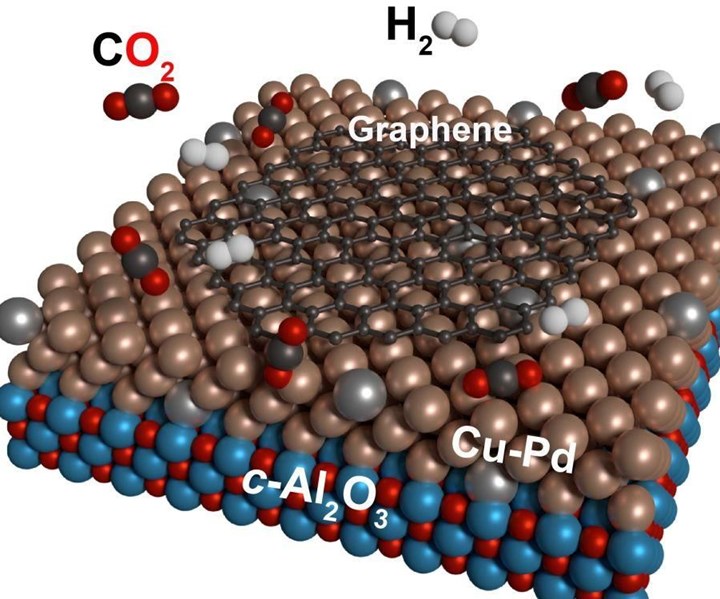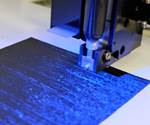KIT produces graphene from carbon dioxide
University researchers have developed a method for direct synthesis of graphene from CO2, targeting potential applications in batteries and electronics.

Carbon dioxide (red-black) and hydrogen (gray) react catalytically on copper-palladium surfaces to form the technology material graphene (black). Source | E. Moreno-Pineda at KIT, via Springer lightweight.design magazine
A working group of the Karlsruhe Institute of Technology (KIT; Karlsruhe, Germany) is using carbon dioxide as a starting material to produce graphene, according to the researchers’ .
The scientists say they have developed a process in which the greenhouse gas carbon dioxide (CO2), together with hydrogen, is directly transferred into the technology material graphene with the aid of specially prepared, catalytically active metal surfaces at temperatures of up to 1,000°C.
“If the metal surface has the right balance of copper and palladium, the conversion of carbon dioxide to graphene will take place directly in a simple one-step process,” says study leader Professor Mario Ruben of the Molecular Materials Working Group at the Institute of Nanotechnology (INT; Evanston, Ill., U.S.) and at the Institute of Inorganic Chemistry (AOC) of KIT.
In further experiments, the researchers produced the graphene with several layers of thickness, targeting possible applications in batteries, electronic components or filter materials. The next research goal of the working group is to shape functioning electronic components from the graphene obtained.
Graphene is the two-dimensional form of the chemical element carbon, which has electrical properties and enables powerful batteries. Learn more about graphene and other nanomaterials, and their use in nanocomposites, in “Nanomaterials: Products, supply chain mature for next-gen composites.”
This post is courtesy of the ÂÌñÏ×ÆÞ and Springer lightweight.design magazine media partnership. For more information about Springer and lightweight.design, go to
Related Content
-
Mito Materials graphene amplify composite fly fishing rod performance
Functionalized graphene addition to premium-performance Evos and Evos Salt fly rods by St. Croix Fly enables faster recovery, increased torsional rigidity and improved strength-to-weight ratios.
-
Nanopoxy, Nione jointly develop nanostructured epoxy resin
Epoxies featuring nanometric niobium pentoxide particles promote toughness, UV radiation resistance and other performance gains.
-
On the radar: Innovations in composite battery enclosures
A look at recently reported design, material and process innovations for composites-intensive battery enclosures, developed to support the ramp-up of EV and AAM vehicles.





